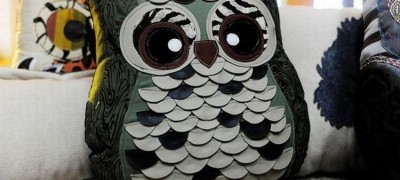Step-by-step instructions for making a mattress for a changing table
With the advent of a child in the orphanage, the life of young parents changes radically - the baby needs all the best and the most comfortable, and adults will have to radically change their way of life. One of the innovations in the room will be a changing table, which will be a real helper for a young mother. Making a mattress for a changing table with your own hands is within the power of every young mother.
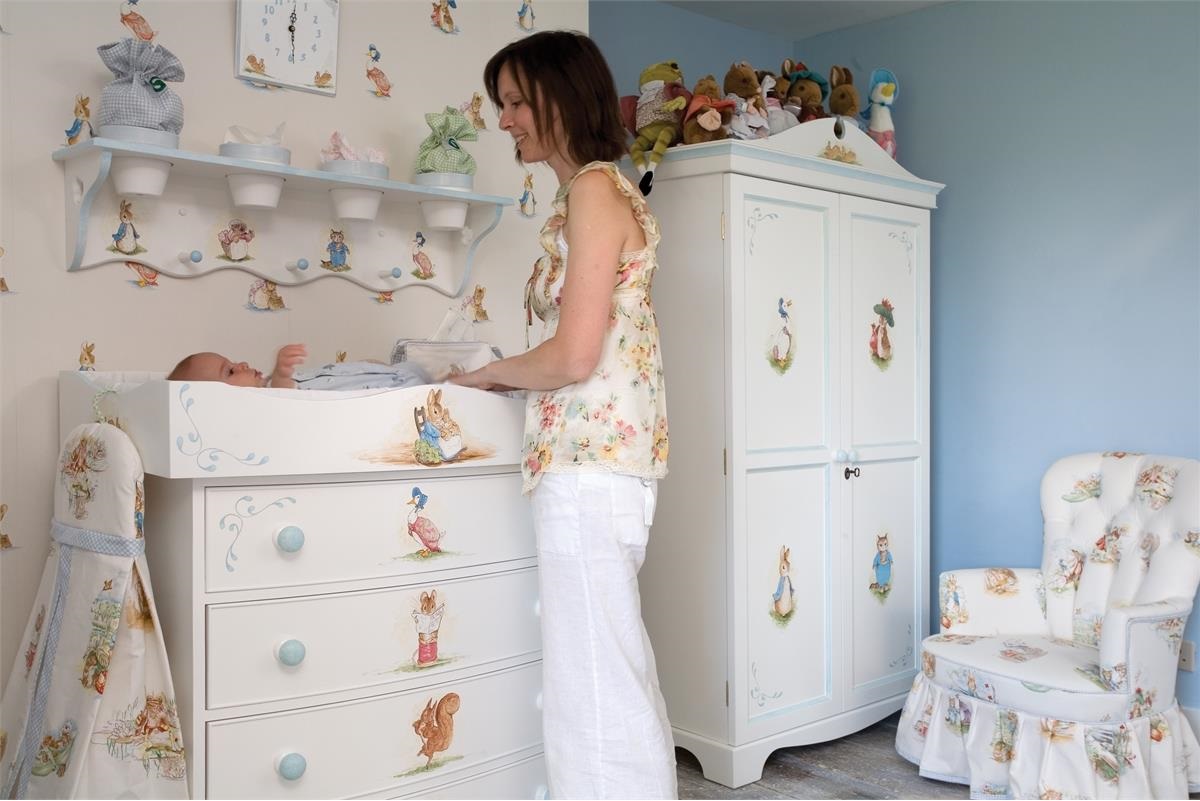
- What is a mattress for a changing table for?
- Varieties
- Popular models of mattresses on the changing table
- How to choose the right one
- How to make a mattress with your own hands
- What is needed
- Step-by-step description of the process
- Decorating
- Helpful hints and tips
- Care and maintenance rules
- Video: do-it-yourself mattress for a changing table
What is a mattress for a changing table for?
Not all families have enough space to install a stationary changing table. Sometimes his role has to be played by a chest of drawers, an ordinary writing desk or even a cabinet.
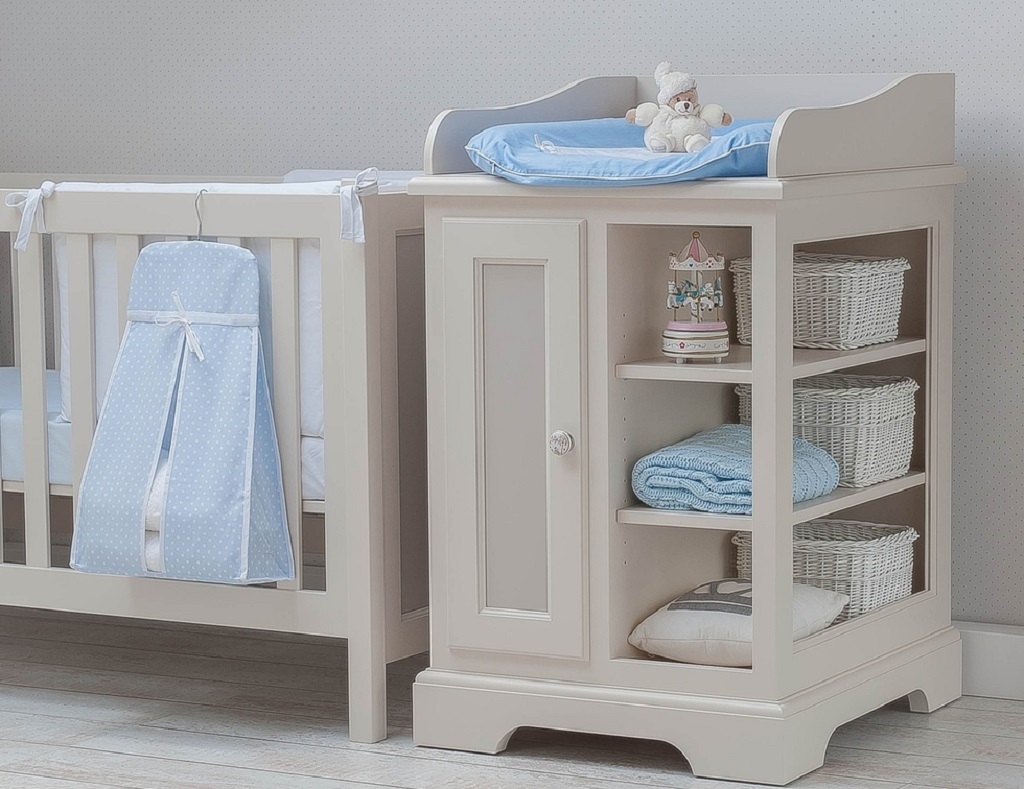
A special mattress with protective sides is designed to make the process of changing clothes or performing hygiene procedures comfortable. The rigid base of the product is versatile and allows you to use it on any surfaces.

Varieties
The mattresses on the market are radically different from each other in color, filling and shape. There are no generally accepted canons - young parents simply acquire what they need.

Manufacturing material and colors
The main criterion for choosing a material is its environmental friendliness and safety for the child. It should be made of natural thread, free of chemical odor and unpleasant ringed structure. Walking mattresses are often covered with oilcloth to make them easy to clean on the go.

An alternative to oilcloth can be a mattress topper made of light natural fabric, which can be easily removed and washed.

Color solutions have no restrictions - everything here is at the discretion of the parents.

The most demanded materials for mattresses are:
- Skylon. This elastic material quickly returns to its original shape after physical impact. It is durable and does not lose its appearance even after several years of regular use.
- Polyester foam. The material is even used for the production of orthopedic mattresses for adults.Polyester is environmentally friendly and safe for humans, insects and harmful microorganisms do not start in it.
- Rubber. A thin changing mattress made of this material will surely be appreciated by traveling parents, because it folds easily and takes up little space. To make the baby comfortable, a thin mattress cover made of natural fabric is put on top.
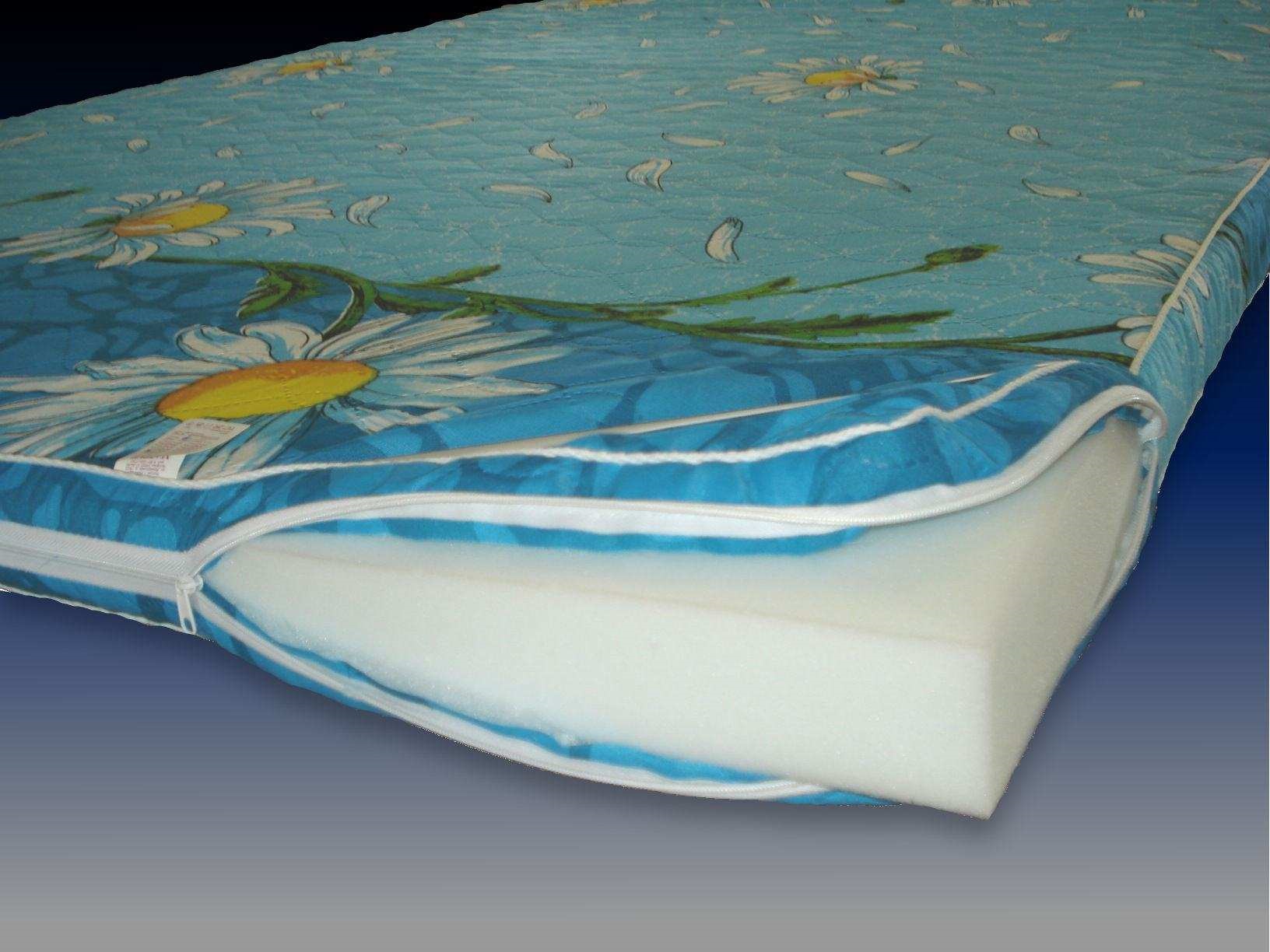
Additional functionality
The most popular option that will appeal to all parents is the presence of a large number of holder pockets on the sides, where you can put toys, bottles and much more. This is especially true if you go outside with a mattress.
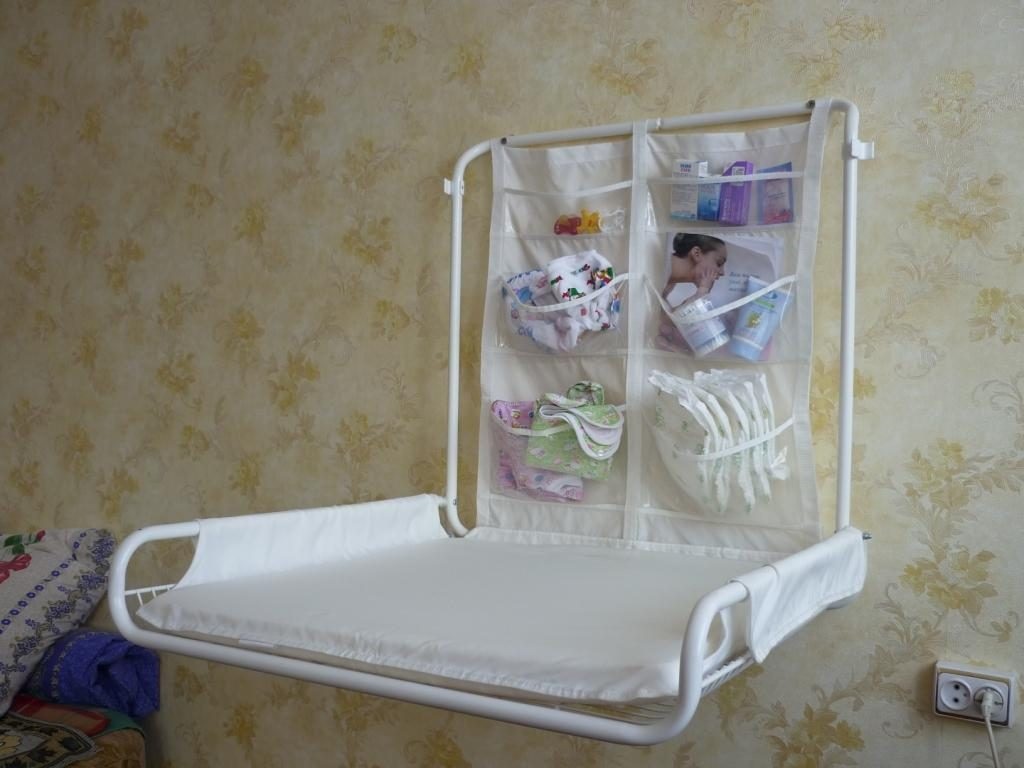
Sizes and shapes
The size of the mattress can vary depending on the size of the chest of drawers or the needs of the customer. There are no generally accepted measurements. There are also transformer models that can be increased several times.

In stores, the size range is limited to only two options: 50x65 cm and 65x60 cm.
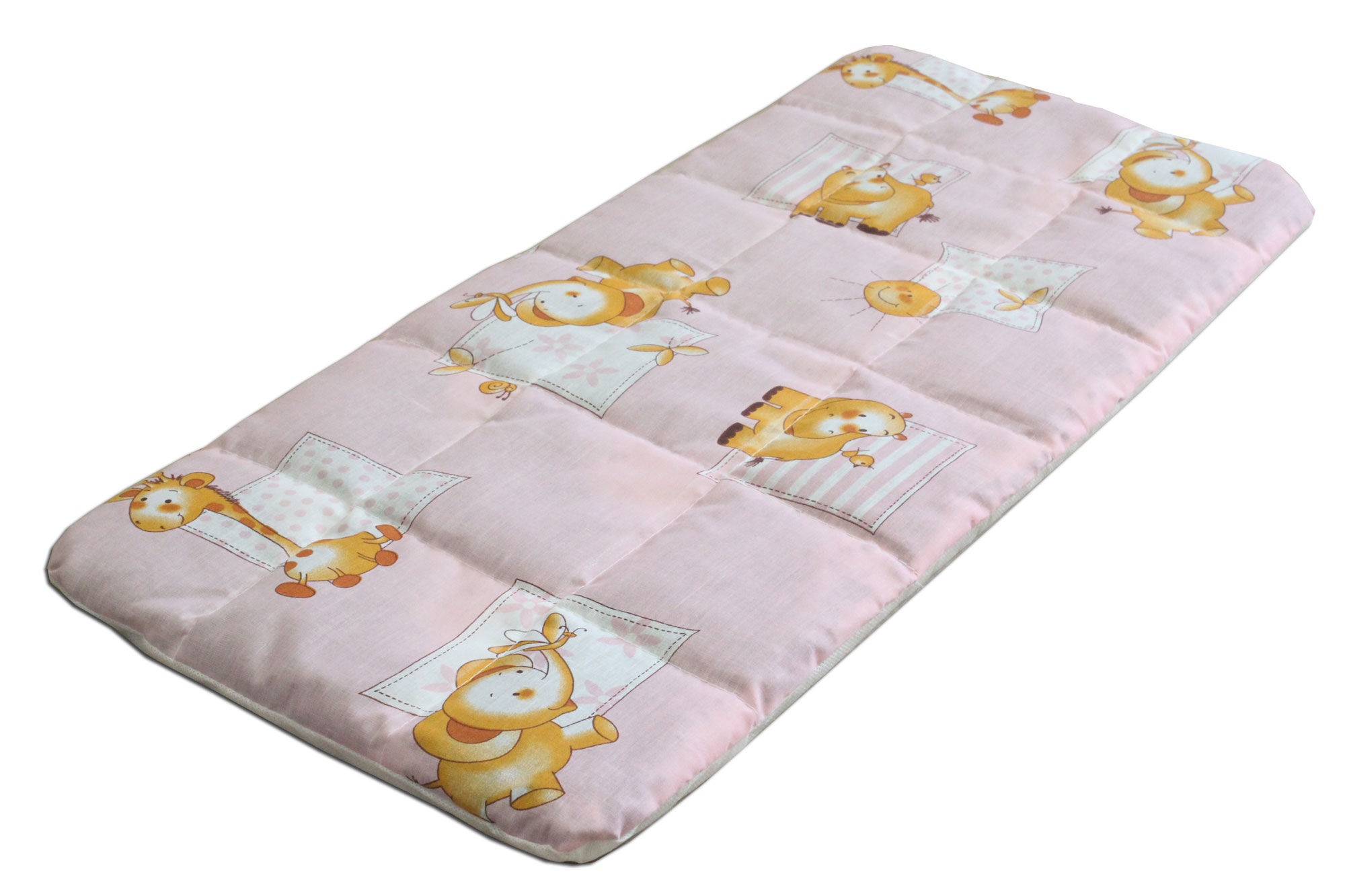
Popular models of mattresses on the changing table
Such a simple and necessary design as a changing mattress is not limited to one type. A young mother can choose the option that best suits her living conditions and personal needs:
- Tapitserka. This kind of pad looks like a sports mat, only thinner. Tapitzerka can be flexible or semi-flexible when only the edges are bent. Products of this kind can be machine washed, taken on the road and laid on any surface - a table, an ordinary tabletop or a curbstone.
- Changing board. The construction is a mattress on a rigid base - most often wooden. Such a model is a real find for those who do not have the opportunity to install a full-fledged changing table. The mattress board can be attached to any surface, even a bathtub. More expensive models fold into a compact case and take up a minimum of space.
- Bag-mat. This product is an indispensable assistant when going to the hospital or on a visit. When unfolded, such a mattress is a tapitzer without sides. If you do not need it, then the product can be easily folded into a compact bag.

Often, young parents purchase several options for mattresses at once - for home use and for going out. This is not only correct, but also very convenient, because wearing a home mattress with a non-folding frame can be very problematic.

How to choose the right one
When purchasing an accessory for a newborn, parents should approach this process responsibly. The selected mattress must meet the following requirements:
- Slippery and cold surfaces are tactile and uncomfortable for the child. For an oilcloth mattress, it is better to choose a mattress topper made of mixed fibers, which will not only provide warmth, but can also be washed in a machine.
- A home mattress should have a firm base and should not be slipped by fabric.Otherwise, the baby may fall from the dresser, as soon as it starts to crawl.
- Poor quality materials usually give off an unpleasant odor that only dulls slightly after washing. No one knows how the baby's skin will react to such a product - a rash or other allergic reactions may appear.

If possible, you need to make a purchase from a trusted manufacturer of children's products. If there are certificates of quality or related documentation, it is better to request them and carefully read the information indicated there.
Note! When buying a mattress topper, it may seem a little harsh. This is completely normal as fabrics are often starchy before being sold. After the first wash, this problem should go away.
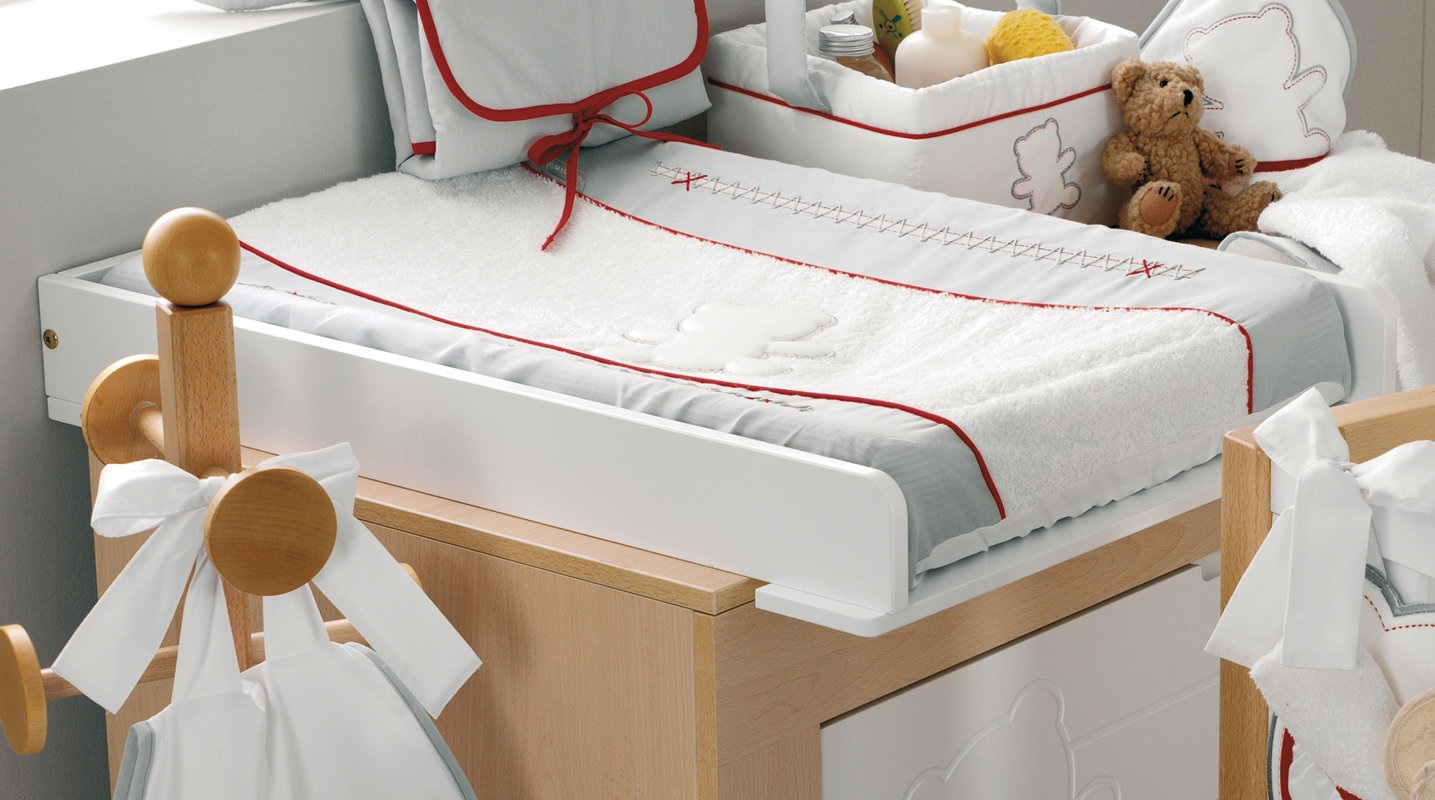
How to make a mattress with your own hands
A young mother can make a mattress on the changing table and on her own. The profile skills of a seamstress are not needed here - the desire to please your baby will be enough. First you need to stock up on related materials and find a pattern. If desired, the pattern can be made on your own, however, for beginners it is better to simply choose the desired option on the Internet.

The advantages of making your own mattress:
- the ability to personally adjust the size;
- the product can be made to match the headset, curtains, etc.
- a caring mother will choose only the best materials for her child.

Even in the absence of skills, it is possible to make a mattress for a changing table in 1 day.

What is needed
To work, you need to purchase:
- Velcro for fixing;
- zipper for the mattress topper;
- filler for a soft base;
- fabric for outer cover.
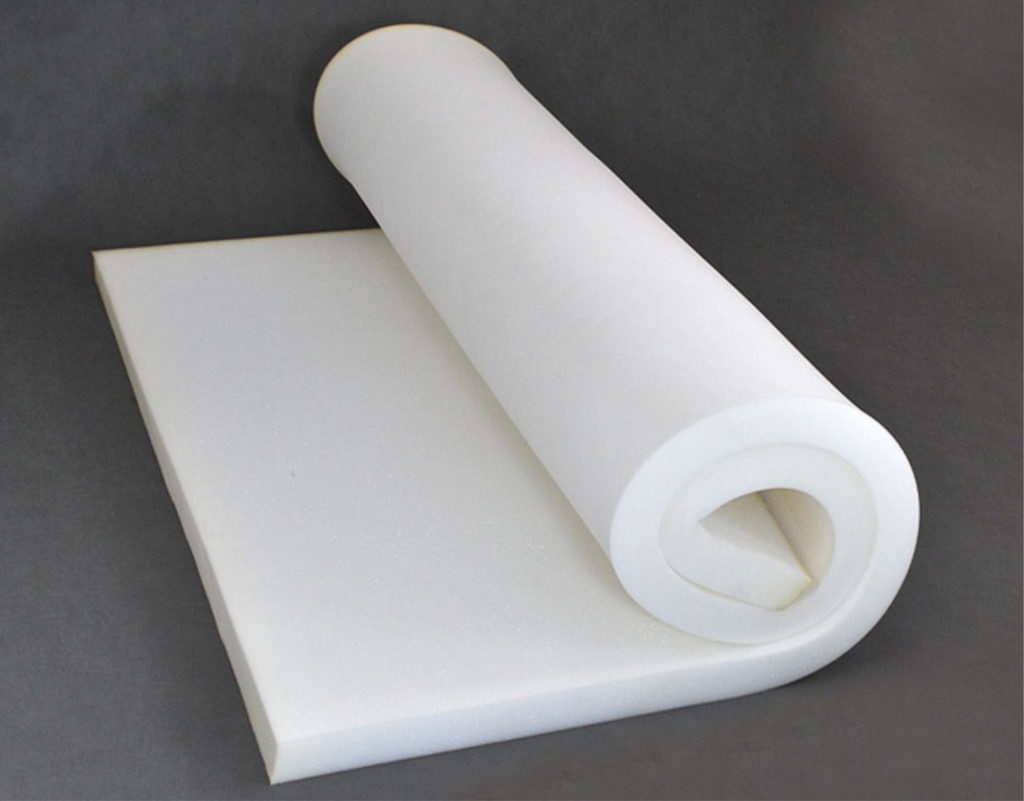
In parallel, you can sew several covers at once, which will be used to replace each other. The base is best made of natural satin, calico or cotton. For a mattress topper, it is advisable to choose a waterproof material.
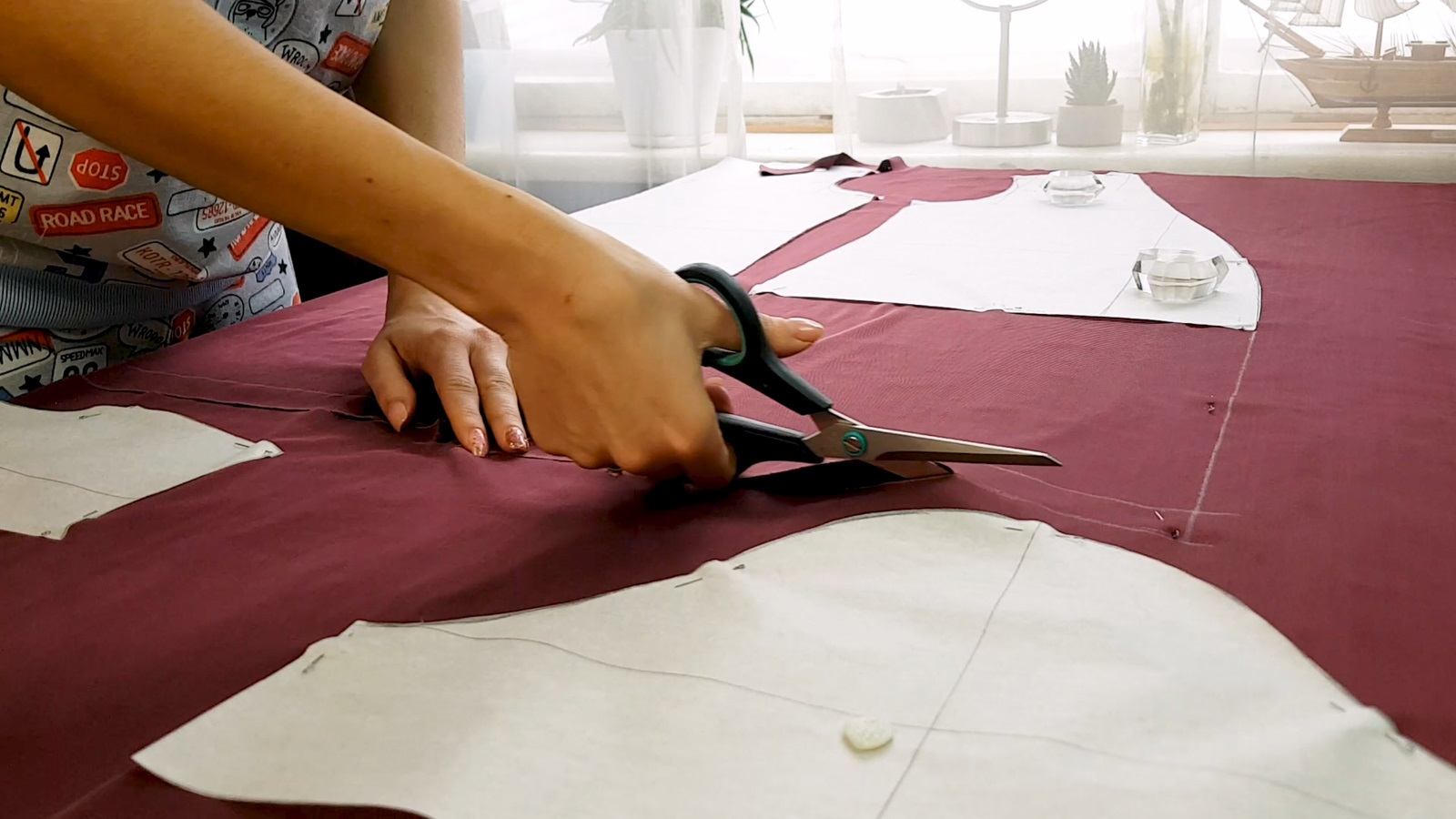
Step-by-step description of the process
It is necessary to perform all the work in order, without jumping from one step to another:
- As a rule, natural fabrics are used for sewing, which must first be washed. If this is not done, the finished product may shrink and will no longer fit on the mattress. It must be washed in water of the temperature at which it is planned to do it in the future.
- Before you start sewing, you need to cut the fabric. It is preferable to work with a solid cut, however, it is allowed to make two separate elements for a non-standard design (for example, a trapezoidal one). The mattress will turn out to be double-sided, and the seams will not cause any discomfort to the child.
- When starting work, the fabric (solid) must be bent in half, with the front side inward. The material must be swept away with thin threads or simply chopped off with needles - whichever is more convenient for anyone.
- The sides need to be ground off.The bottom is covered with a short stitching on both sides. The zipper will be sewn into the remaining space. It is better to take the snake with a retainer so that it does not unfasten arbitrarily.
- Velcro is placed in pre-prepared places. They are used if you want to do without lightning. Or, alternatively, Velcro can be a way of attaching the mattress to the base - so it will definitely not slip.

After the work is completed, the product must be washed again, steamed with an iron. It is now ready for use.

Decorating
Convex elements made of beads or volumetric appliqués are not very welcome - the child can tear them off, try to eat them. As a decorative element, you can use a flat tweed or plush applique, embroidery on the sides. It can be a cartoon character, a flower, a car, etc. Everything that seems appropriate to a young mother.

Helpful hints and tips
When choosing a fabric for the exterior, you need to take into account the seam allowances. They "eat" from 2 to 4 cm. The selected fabric should not be too bright - usually such cuts begin to shed profusely and even stain the child. Shedding is not an indicator of the quality of the material. Even the most expensive option can give away the surplus. If such a cut is nevertheless acquired, it must be washed several times in warm soapy water - after that, the excess paint usually goes away.

Care and maintenance rules
In order for both the mattress topper and the mattress itself to last as long as possible, they need to be treated with care: do not use aggressive chemicals or bleaches. It is necessary to change the mattress topper (with active use) daily, not allowing the child to lie on the soiled surface.

Today there are a huge variety of mattresses for various purposes. They all vary in price, design and manufacturer. If you did not find a suitable option among the presented assortment, you can make a mattress yourself. If you wish, this can be done in one day - it is enough just to correctly cut the cut, taking into account the allowances and carefully sew all the elements together. Do-it-yourself mattresses for a changing dresser from a caring mother are no worse than factory mattresses!
Video: do-it-yourself mattress for a changing table



